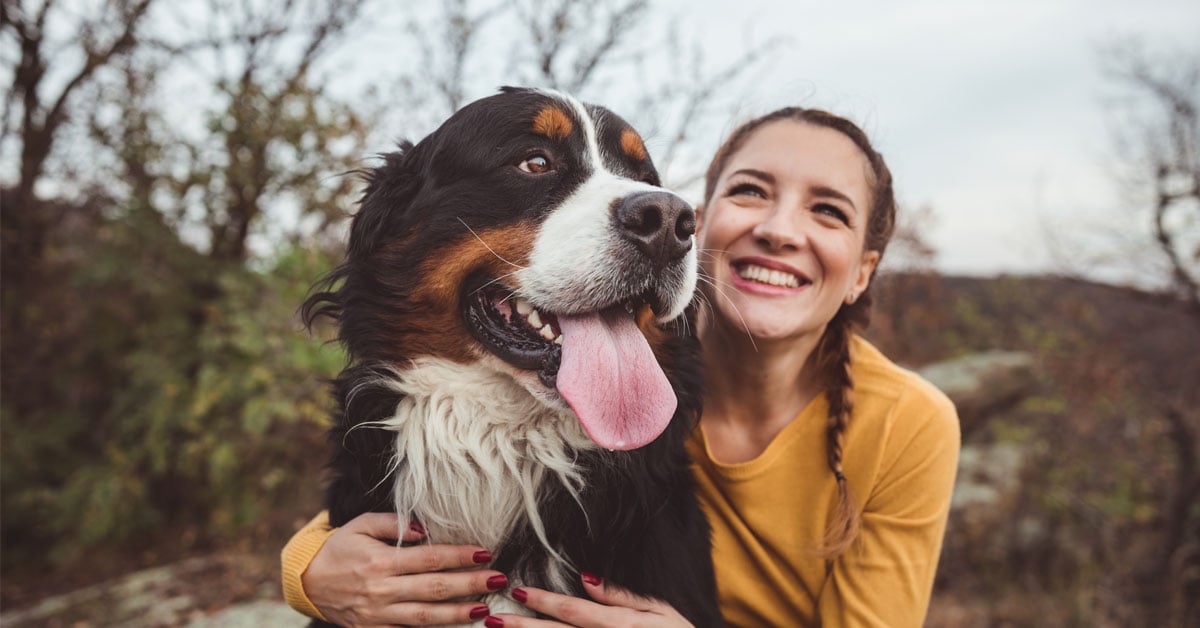
Did you know that tooth decay and gum disease have been linked to heart disease, kidney disease, and other serious chronic illnesses in pets? Just like humans, oral health is an important contributor to overall health, and it shouldn’t be overlooked.
The majority of oral diseases are easily preventable and can be detected relatively early. Bad breath is, in fact, the first sign of many dental diseases. Yet, it’s typical for owners to assume that bad breath is common in animals and dismiss the symptom entirely.
In honor of National Pet Week, we are shedding light on animal oral health and sharing dental tips and professional advice on how to take care of your pet’s teeth and gums for years to come.
Your Pet’s Anatomy
It’s important first to understand your pet’s mouth. Their teeth are very similar to ours in the sense that they’re born with no teeth, eventually grow and lose their baby teeth and finally grow out a set of adult teeth.
Your pet’s mouth is also subject to plaque, thinning enamel, tooth loss, bad breath, and gum disease. It’s just as important to follow proper oral hygiene on your cats and/or dogs.
Routine Checkup
Your pet should be visiting the veterinarian at least once a year for a regular health checkup. And of course, this appointment should include an oral examination. This will be part inspection of your pet’s teeth and gums for any signs of health issues, as well as professional cleaning.
Teeth Brushing
No, your pets won’t brush their teeth three times a day and floss regularly. But, it is your responsibility to brush your pet’s teeth at least three times a week. There are toothbrushes designed specifically for cats and dogs with gentler bristles, longer handles, and angled heads. There are also special kinds of toothpaste made specifically for animals because you should never use human toothpaste on your cat or dog.
Here are additional tips on brushing your pet’s teeth:
- Brushing should be done when your cat or dog is calm and relaxed.
- Try rubbing your finger on their teeth and gums beforehand to test how receptive they are.
- Use small circular motions when brushing.
- Massage their gums with your fingers to help soothe inflammation.
- It’s normal for some bleeding to occur, however, if it continues, then you are either brushing too hard or it can be an early sign of gum disease.
Dental Treats
Animals love treats, so you might as well give them a treat that will improve their dental health as they chew. Dental treats are made with added ingredients that remove plaque build-up while freshening breath. Many animal food brands offer these dental treats in a variety of shapes, sizes, and flavors so that you’re sure to find something for the specific breed, size, and preference of your cat or dog. What’s important is that the product is approved by the Veterinary Oral Health Council (VOHC) to ensure that it has met a standard of effectiveness and gone through clinical trials.
Pet Toys
Toys can be another great tool for keeping your pets’ oral health in check. This is because the act of chewing, in general, helps scrape plaque off teeth and keep the jaw strong. But with the vast selection of pet toys out there, it’s crucial to recognize which ones strengthen teeth and which can actually cause harm. Bones, for instance, can splinter gums, chip teeth, and be choking hazards. The wool and nylon of tennis balls can be abrasive on gums and wear down enamel. Instead, opt for fresh produce, rubber toys, and dental treats.
Diet
Finally, your animal’s diet can also impact their oral health. In fact, dental calculus is a common problem in most domestic cats and dogs and occurs when plaque build-up from food particles harden around teeth. Dry food helps remove these particles but can be painful to eat for any pet with sensitive teeth or gums. Wet food can be an optimal solution to ensure your pet is eating pain-free, but won’t clean teeth or massage gums as hard food does. The key is to pay attention to your pet’s teeth and gums and cater food choices to their oral health.
Since your pets’ oral health resembles closely to our own, it should be no surprise that they too require adequate dental attention. If you haven’t been thinking of your cat and/or dogs teeth and gums, now is the time to start.

